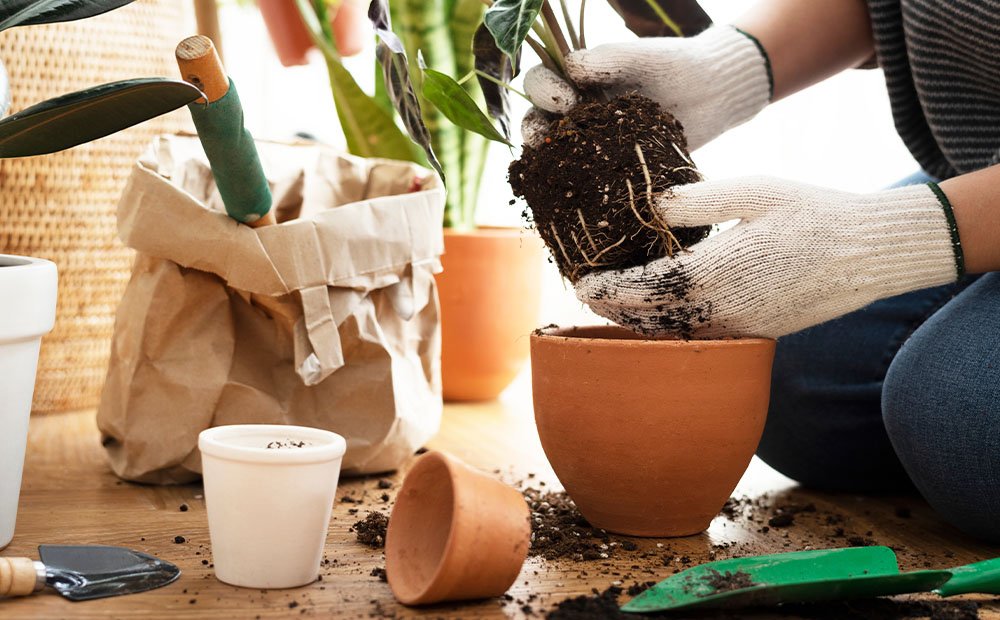EMPOWERED OWNERSHIP: THE WHEN & HOW OF HOUSEPLANT CARE
Adopting plant babies can be such an exciting endeavor. Not only are houseplants gorgeous, but they improve concentration, creativity, and an overall sense of health and well-being. Given what we get from our houseplants, it only makes sense to give them the best care that we possibly can. However, if you’re new to houseplant ownership, all of the care advice can feel a little daunting at times. Here are some answers to typical soil, repotting, and fertilizer questions.
When Should I Repot My Houseplant?
Wondering if it’s time to move your houseplant into a new, bigger home? Repotting is essential for the health of your houseplant because it needs enough room to spread its roots to soak up nutrients. Your plant will signal that it needs replanting in a few ways:
The roots are growing out of the drainage holes, or the roots are circling tightly around the root ball
The soil drying out faster than usual, which means there isn’t enough soil to hold the moisture the plant requires
Your plant looks generally unhealthy, including limp leaves and stems, or it has stopped growing
Your plant is lifting out of the pot, which indicates that the roots are circling the pot
If your plant has these symptoms, it’s a good idea to repot. You might also want to repot to encourage your plant to grow larger. Either way, timing is very important when it comes to repotting.
Spring is the ideal time to repot since your houseplant will be out of dormancy and starting to grow new roots. By repotting in the spring, your houseplant will have more of an opportunity to re-establish itself in its new home before the next winter and dormancy period.
How Often Should I Change the Soil?
Soil changing frequency will vary based on the plant type. Fast-growing houseplants like Pothos or Snake Plant will need their soil changed more often than, say, succulents or cacti because they will absorb the nutrients in the soil faster.
As a general rule of thumb, you don’t want to replant more than once a year. If your plant has not outgrown its current container, it will still benefit from getting fresh potting soil every 12 - 18 months. Again, spring is the best time to change your plant’s soil so that it has all season to re-establish.
When Should I Fertilize?
Just like the flowers in your garden, houseplants benefit from fertilizer too! While different plants have different needs (i.e., some are heavier feeders than others), there are simple fertilizing guidelines that apply to most plants.
Here are a few things to keep in mind when fertilizing your houseplants:
Your houseplants do not need fertilizer in the winter. They are generally not growing much through the winter months, so they don’t soak up as much nutrients.
You can start fertilizing your houseplants once every two to three weeks in the spring, around the end of March, and continue that schedule until early fall. The days will start getting shorter by late fall, and your houseplants prepare for winter when their growth slows.
There are specialized fertilizers for certain houseplants like cacti and some tropicals, but otherwise, you are likely safe using a general-purpose indoor plant fertilizer. Just be sure to read the instructions on the particular product to ensure that you don’t overdo it.
Less is more! Your houseplants will meet an unfortunate and untimely death if you over-fertilize them, which is something we definitely want to avoid!
We hope this simple Indiana houseplant care guide has been helpful. Feel free to stop by Damman’s Garden Co. with any other plant-related questions; we are always happy to help!






